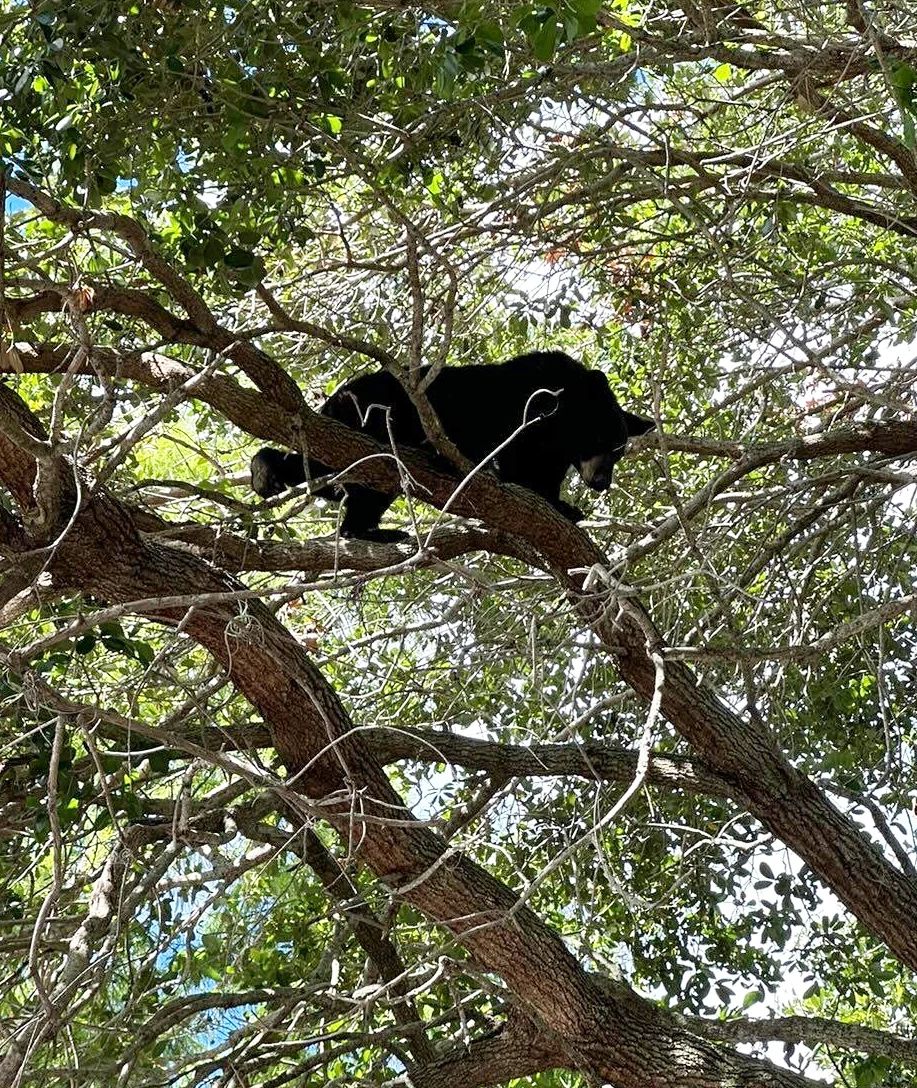6/5 UPDATE: The bear was seen leaving the park on its own accord at 1 a.m. We’ve shared an update on Instagram that you can see HERE.
A juvenile black bear was spotted in a tree in Lake Eola Park in the wee hours of Sunday, June 4.
According to Commissioner Patty Sheehan, District 4, who had been on the scene for at least two hours before speaking to us, the bear had been behaving calmly and was completely “docile” at the top of a live oak tree near Relax Grill. The area had been roped off to prevent pedestrians and pets from getting too close.
“Fish and Wildlife officials just got here and we’re hoping to get this big baby out of the tree and somewhere safe really soon.”
– COMMISSIONER PATTY SHEEHAN, DISTRICT 4, CITY OF ORLANDO
Though Orlando Police had no record of the bear when we called, bike patrol officers were also on the scene. The bear had allegedly spent the evening in the tree.
This is the second juvenile bear to make its way through downtown Orlando neighborhoods this spring, though the first one in a number of years to find itself in the heart of the Central Business District. A bear spotted in Audubon Park two months ago wandered all the way through to College Park before being hit by a vehicle on April 27.
Juvenile black bears leave their mother’s home range in the spring and summer to find new territories to live their best adult lives each year, according to the FWC. The best thing people can do when they see a black bear is to give them some space and let them move on in their own time. Black bears are not usually aggressive unless threatened when they can become defensive.
The FWC gets an estimated 5,000-6,000 bear-related calls each year and according to an interview by Tampa Bay 10 in 2022, only 2% of those calls require the FWC to trap the bear in question, and even fewer cases call for using a tranquilizer when the bear isn’t already inside of a trap.
Our bear biologists always try to minimize risks when capturing bears. Chemical immobilization drugs can take time to affect the animal or may not completely immobilize them, and in those cases, the animal can potentially run off, creating an unsafe situation for both the bear and the public.
When trying to anesthetize an animal that is high up a tree, there is also always the risk of injury if they fall to the ground as the drug takes effect. Bears can also get stuck in the tree as they fall, creating an unsafe situation for both the bear and responders.
The safest method of capture is by using a bear trap and is the least risky option for the both the bear and the public. In this situation, attempts were made to try and trap the bear for relocation but the bear continued to be on the move. Each situation may be different, but generally it is best practice for bears to be given plenty of space so that they will move away on their own.
– FLORIDA FISH AND WILDLIFE CONSERVATION COMMISSION


Please, please, please FWC, give him a little sleepy med and take him to a forest! Don’t let him get hurt like the other bear that was passing through.